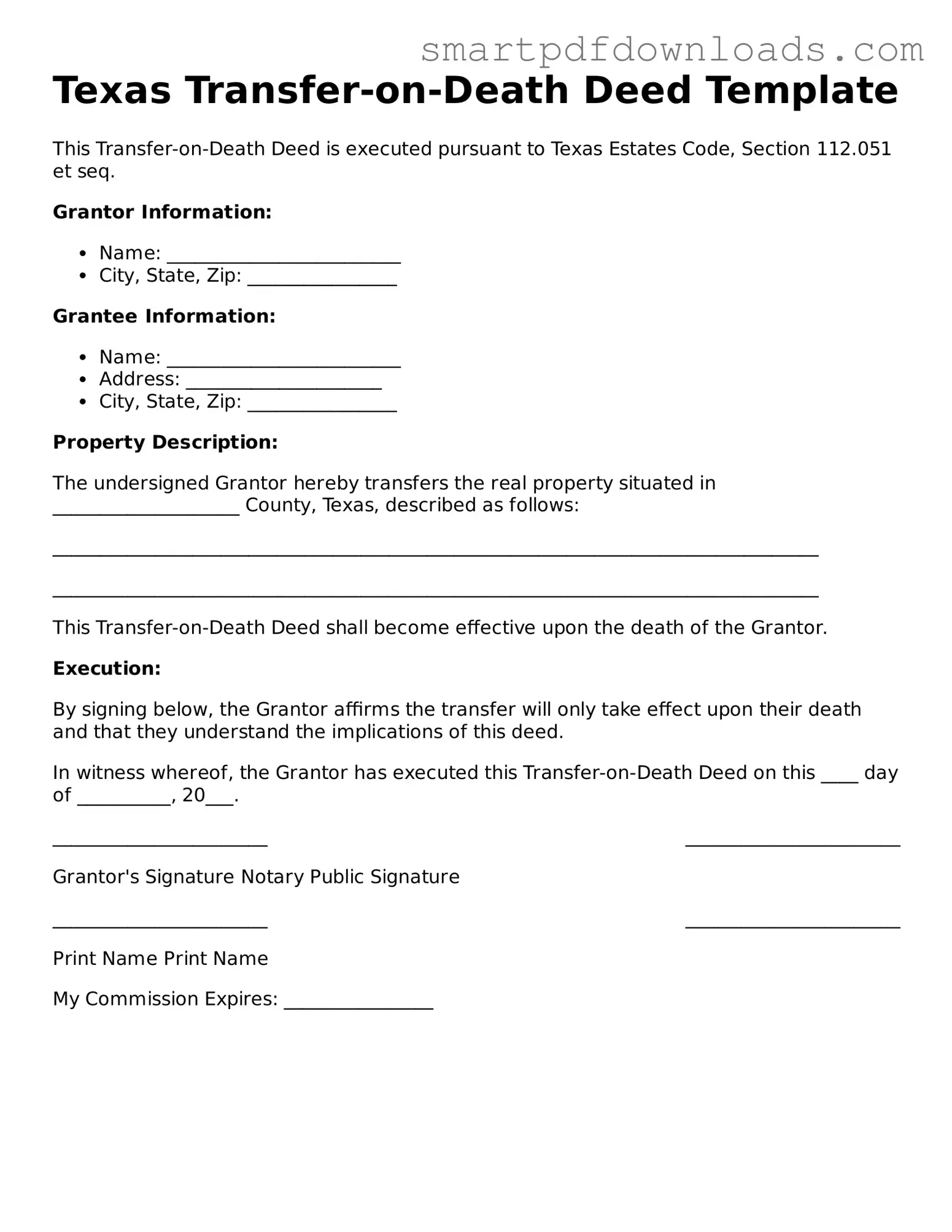Legal Transfer-on-Death Deed Form for the State of Texas
The Texas Transfer-on-Death Deed form allows property owners to designate a beneficiary who will receive their property upon their death, bypassing the probate process. This legal tool offers a straightforward way to transfer real estate, ensuring that the owner's wishes are honored without the complexities often associated with inheritance. Understanding how to properly utilize this form can provide peace of mind and clarity for both the property owner and their loved ones.
Edit Transfer-on-Death Deed Online
